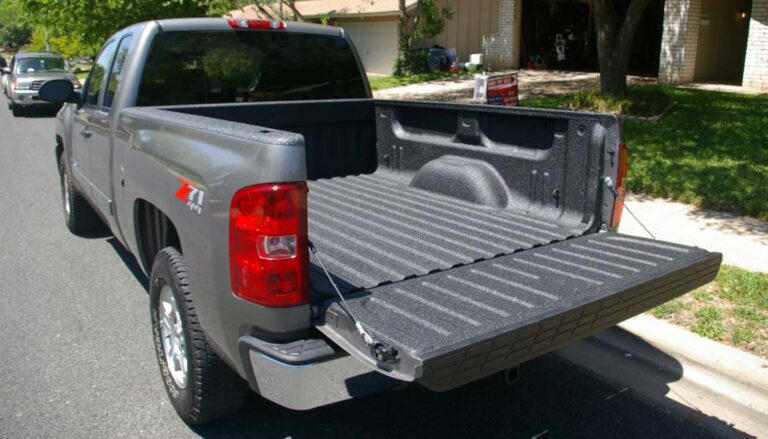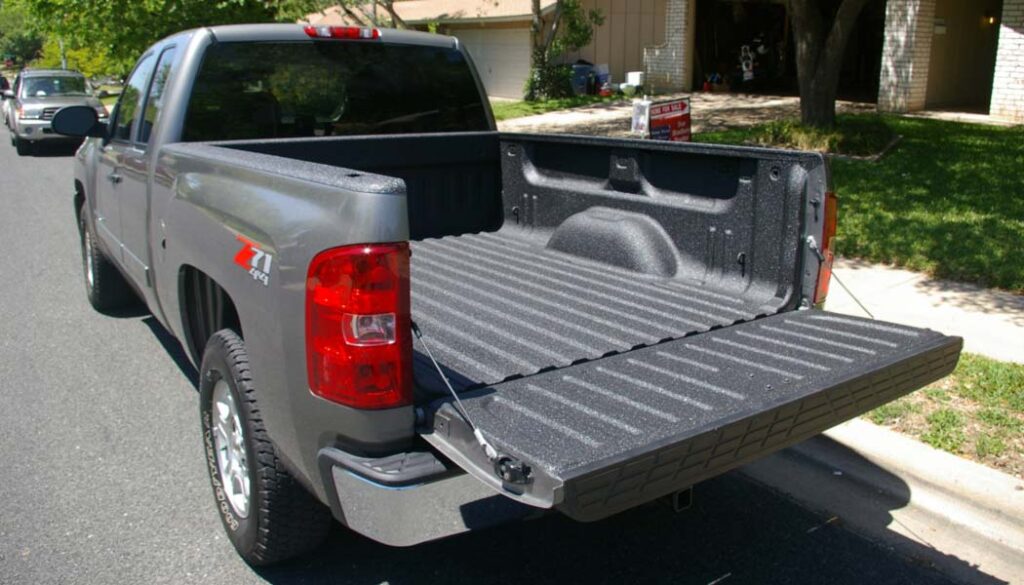
Can You Paint over Raptor Liner: What You Need to Know
Are you planning to customize your truck bed with a new paint job, but it’s already coated with Raptor liner? If so, you may have this question in mind: can you paint over Raptor liner?
Yes, you can paint over Raptor liner. But you will need to follow some steps with care that include proper preparation, using the right paint and adhesion promoter, and applying paint carefully.

In this guide, we will explore whether it’s possible to paint over Raptor liner and the steps you need to take to do it successfully.
Why to Paint over Raptor Liner?
While Raptor liner is a durable coating, there are several reasons why people may choose to paint over it.
1. Aesthetics: Raptor liner comes with a textured coating that can have a rough or matte finish. While this texture can be desirable in some cases, it might not be the look that some people want for their vehicle. By painting over it, you can achieve a smoother and more polished finish that may be more aesthetically pleasing.
2. Color: This is obtainable in a limited number of colors, typically black or gray. If you want to change the color of your vehicle, painting over it is an easy way to achieve this.
3. Customization: By painting over it, you can create custom designs and graphics on your vehicle. This can be especially desirable for businesses that want to add logos or branding to their vehicles.
4. UV protection: While Raptor liners are resistant to UV rays, painting it with a clear coat can provide an extra layer of protection. It works against fading and damage caused by the sun.
5. Repair: If the liner on your vehicle becomes damaged, painting over it can repair the damage and restore the appearance of your vehicle.
Can You Paint over Raptor Liner?
If you are looking to paint Raptor liner, it is possible, but there are some important considerations to keep in mind.
- Prepare the Raptor liner surface before painting, including cleaning and lightly sanding the surface. Any dirt, grease, or other contaminants on the surface should be removed before painting.
- The curing time of the liner should be considered before painting over it. It is recommended to wait at least 24 hours after applying the liner before painting.
- If the liner is damaged or peeling, it should be repaired or removed before painting over it. This step will ensure a smooth surface for the paint.
- When choosing paint, select one that is well-suited with the liner coating. For example, some paints may not adhere well to polyurethane coatings. So, make sure to choose a paint specifically formulated for use on polyurethane surfaces.
- An adhesion promoter can be used to help the new paint adhere to the facet. This is especially important if the surface has been exposed to UV rays, which can cause the surface to become slick and reduce the adhesion of the paint.
How to Paint over Raptor Liner?
To paint over a Raptor liner, you will need to follow some specific steps for satisfying result. Here’s a step-by-step guide on painting over liner surface.
Materials You Need:
- Sandpaper (80 grit and 220 grit)
- Tack cloth or microfiber cloth
- Adhesion promoter
- Paint (with a compatible primer)
- Spray gun or paint roller
Step 1: Clean the surface
Before you start sanding, you need to clean the surface thoroughly. Use a mild soap and water to remove any dirt, grease, or oil. Rinse well and dry with a clean cloth.
Step 2: Sand the surface
Using 80-grit sandpaper, roughen up the area to assist the adhesion promoter stick to the area. Sand the surface until it feels rough to the touch. Then, use a 220-grit sandpaper to smooth out any rough patches or bumps. Be sure to eliminate any dust or debris with a tack cloth or microfiber cloth.
Step 3: Apply adhesion promoter
Apply a coat of adhesion promoter to the liner surface. It will aid the paint adhere better to the textured surface. Follow the instructions on the adhesion promoter and allow it to dry completely before moving on to the next step.
Step 4: Apply primer
Applying a coat of primer will create a smooth base for the paint to adhere to and will also help the paint color to appear more vibrant. Allow the primer to dry completely before applying paint.
Step 5: Apply paint
Using a spray gun or paint roller, apply your paint to the surface. Make sure to apply the paint evenly and in thin coats. Allow the first coat to dry completely before applying a second coat. You may need to apply multiple coats to achieve the desired finish.
Step 6: Allow the paint to dry
Once you have applied the final coat of paint, allow it to dry completely before using or touching the surface. Check the paint’s instructions for the recommended drying time.
Tips to Ensure Successful Painting over Raptor Liner
In a nutshell, you will need to complete the following steps to achieve best painting over Raptor liner.
- Clean the surface thoroughly to make sure the surface is free of any dirt, debris, or grease.
- Sand the surface until it’s smooth and even, and then wipe it clean with a tack cloth.
- Prime the surface; it will help the paint adhere better and prevent peeling.
- Choose the right paint that is compatible with the primer you’ve used.
- Apply the paint in thin coats to achieve a smooth finish.
- Allow each coat of paint to dry completely before applying the next one.
- Protect the surface with a clear coat or other protective coating to prevent damage and ensure a long-lasting finish.
Advantages and Disadvantages of Painting over Raptor Liner
While it is designed to be used as a standalone coating, some people opt to paint Raptor liner for aesthetic or protective reasons. Here are some advantages and disadvantages of painting over Raptor liner.
Advantages:
- Painting over protective liner is particularly useful if it has started to fade or look worn.
- Painting it can provide extra protection against scratches, UV rays, and other environmental factors.
- To customize the color and finish of the surface, people paint it.
Disadvantages:
- Paint may not adhere well to the Raptor liner. This can lead to bubbling, cracking, and peeling of the paint over time.
- The process requires careful preparation to ensure a smooth finish. It’s time-consuming as well.
- Painting over the surface adds an extra layer of material and labor, which can increase the cost of the project.
What Types of Paints Go with Raptor Liner?
Raptor liner is a type of polyurethane coating that’s famous for its durability, abrasion resistance, and chemical resistance.
When it comes to painting over it, it’s vital to choose the suitable paint. The following are some paints that are compatible with it.
Acrylic enamel paint: This type of paint is often used for automotive applications and provides a hard, durable finish that resists chipping and fading.
Epoxy paint: Epoxy is a two-part system that forms a hard, chemical-resistant coating. It’s often used in industrial settings and is an excellent choice for surfaces that will be exposed to harsh chemicals.
Urethane paint: Urethane paint is high-quality automotive paint that provides excellent gloss and durability. It’s resistant to chipping and fading and is an excellent choice for surfaces that will be exposed to sunlight.
Can Painting Raptor Liner Affect Its Strength?
The good news is that properly applied paint should not significantly impact the strength of Raptor liner. However, it is crucial to make sure that the paint is allowed to dry thoroughly before any heavy use. Note that any modifications made to the original liner, such as sanding or cutting, may compromise its strength and durability.
Therefore, if you plan to paint your Raptor liner, use compatible paint and apply it correctly. It is because any mistakes may result in a compromised finish that may not provide the expected protection.
If you’re interested to check Raptor liner paint job:
Final Thoughts
Ultimately, the decision to paint over Raptor liner should be based on the specific needs and preferences of the user. If a different color or finish is desired, or if the liner has become damaged, painting over it may be a good option. However, it is important to approach the process with care. Careful planning and execution are the key to achieving a smooth and flawless paint job over Raptor liner.
